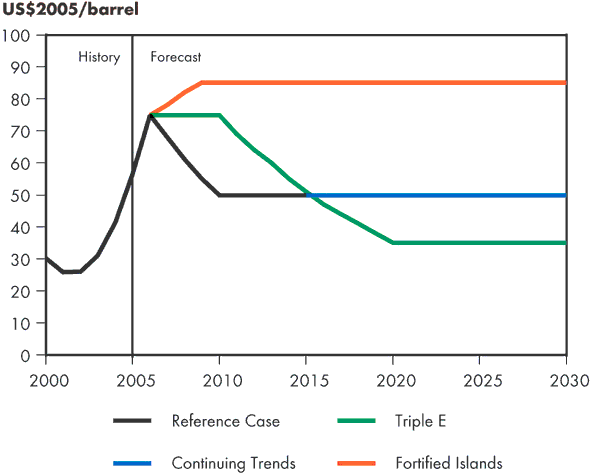ARCHIVED - Fact Sheet - Canada's Energy Future: Reference Case and Scenarios to 2030 - Report Methodology Overview
This page has been archived on the Web
Information identified as archived is provided for reference, research or recordkeeping purposes. It is not subject to the Government of Canada Web Standards and has not been altered or updated since it was archived. Please contact us to request a format other than those available.
Fact Sheet - Canada's Energy Future: Reference Case and Scenarios to 2030 - Report Methodology Overview
Studies such as Canada's Energy Future are part of the National Energy Board (NEB)'s mandate to monitor all aspects of energy supply, transportation and use in Canada. Providing this information is part of the NEB's overall goal that Canadians benefit from efficient energy infrastructure and markets.
The NEB has a long history of providing Canadians with information about the future of energy in Canada dating back to 1967. The last NEB report assessing the issue was released in the summer of 2003.
Report Objectives
- To provide Canadians with our analysis on energy supply, demand and its economic and environmental implications.
- To promote discussion amongst stakeholders on emerging issues of national importance.
- To inform decision makers of key risks and uncertainties facing the energy future and advise them of regulatory and other issues that need to be addressed.
Report Timeline
The NEB began work on this report in the fall of 2005. The first phase of the report involved gathering information on the issues from a number of sources including experts in the energy field. Many of these experts made presentations to NEB staff in a speaker series and panel discussion forum.
There were also two rounds of consultation meetings held in cities across Canada with over 200 individuals representing industry, government, non-governmental organizations and academia. A team of NEB staff spent close to a year conducting the modeling and analysis and then writing the report.
Scenarios
Scenarios were used as part of the methodology for this analysis. The scenarios are stories of how the future could unfold.
The Reference Case covers the time period from 2005-2015. It is based on known developments and represents our best estimate of how the energy system will evolve over that period. The other three scenarios cover the time frame from 2005-2030. These scenarios are broader in nature and take into account various possible government policies, geopolitical situations, energy prices, technological developments and economic growth rates.
- Continuing Trends Scenario: Trends that are apparent at the beginning of the outlook period are maintained throughout the entire forecast and extend from the reference case over the long term.
- Triple E Scenario: A balancing of the economy, environment and energy objectives means this scenario has well-functioning energy markets, cooperative international agreements and the most rigorous environmental policies of the three scenarios.
- Fortified Islands Scenario: Security concerns dominate this scenario with geopolitical unrest, a lack of international cooperation and trust and protectionist government policies.
Assumptions for analysis
Macroeconomic
Economic growth, gross output and personal disposable income were used to develop the demand and supply outlooks. Energy demand trends are particularly influenced by overall economic growth rates, the structure of the Canadian economy and the regional distribution of gross domestic product (GDP). The GDP growth for this report is assumed to be in the range of 1.8 to 2.5 per cent across the three scenarios. The rate for the Reference Case is 2.9 per cent.
Greenhouse gas emissions
The analysis in this report on greenhouse gas (GHG) emissions focuses strictly on energy related activities in Canada, such as energy efficiency measures, improved energy management systems and investment in carbon dioxide capture and storage. GHG emission credits, such as offsets or international mechanisms, were not considered in this analysis since the focus in this report is on energy markets in Canada and associated GHG emissions. As well initiatives outside the energy field are not considered in the analysis.
Price
Oil
Price assumptions for oil were set for each of the three scenarios (all figures in U.S. dollars): $50 per barrel for both the reference case and Continuing Trends, $35 per barrel for Triple E, and $85 per barrel for Fortified Islands.
West Texas Intermediate Crude Oil Price at Cushing, Oklahoma

Gas
Price assumptions for gas were set for each of the three scenarios (all figures in 2005 U.S. dollars): $7.00 per million British thermal units for both the Reference Case and Continuing Trends, $5.50 for Triple E, and $12.00 for Fortified Islands.
Electricity
Electricity prices can vary between regions depending on the mix of fuels for generation, reserve margins and load growth. In all scenarios outlined, electricity prices are expected to increase.
- Date modified:
